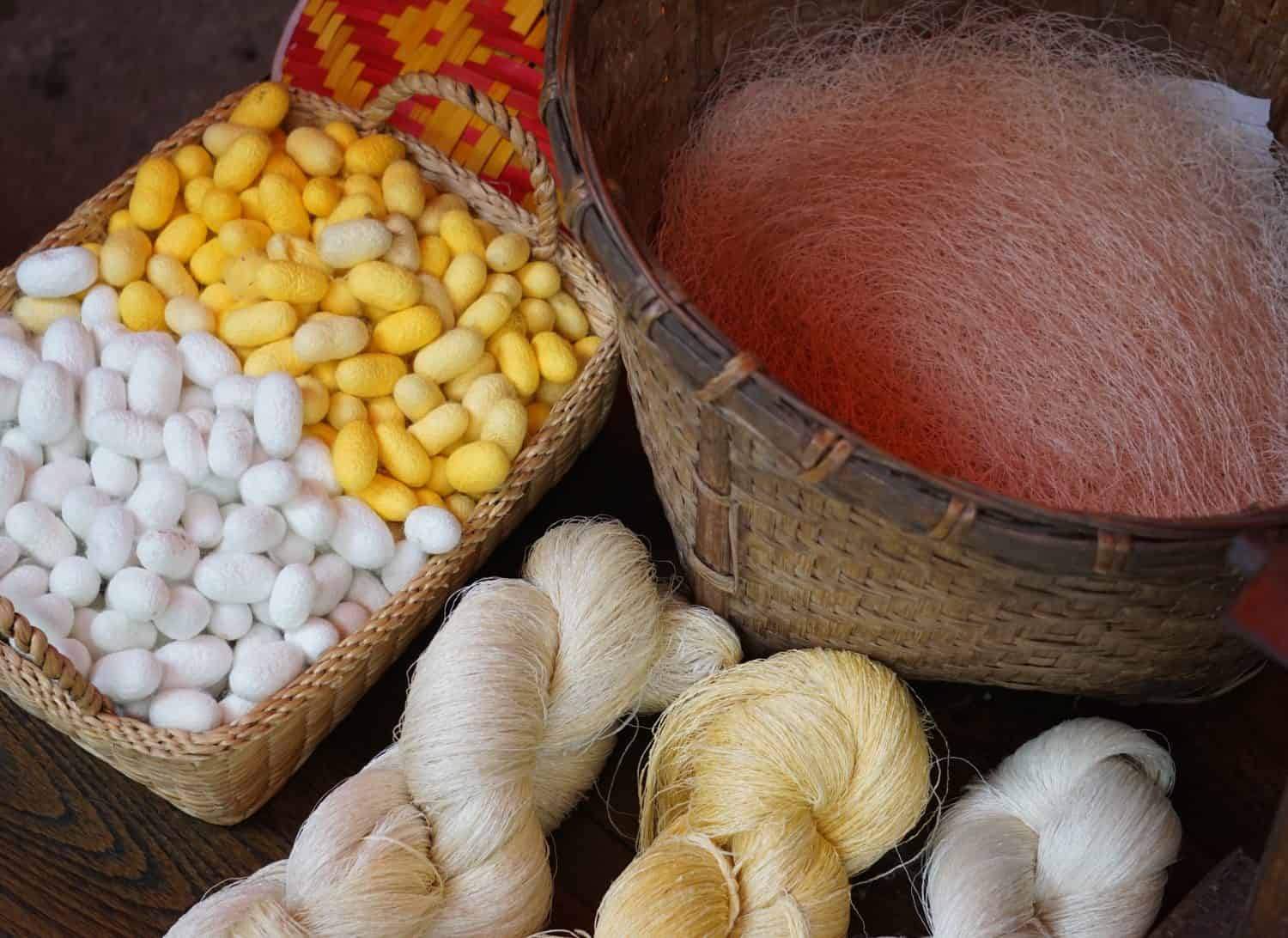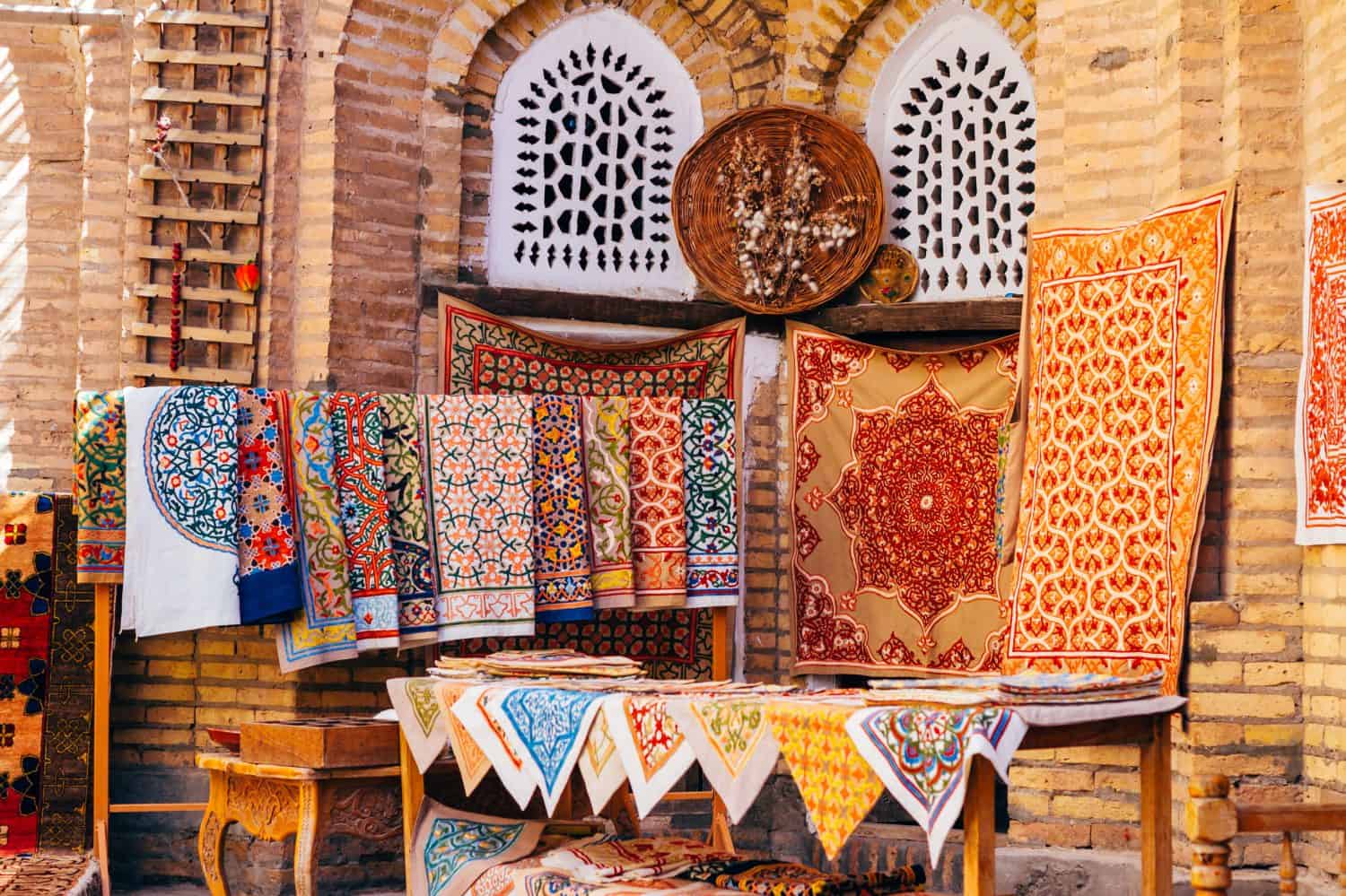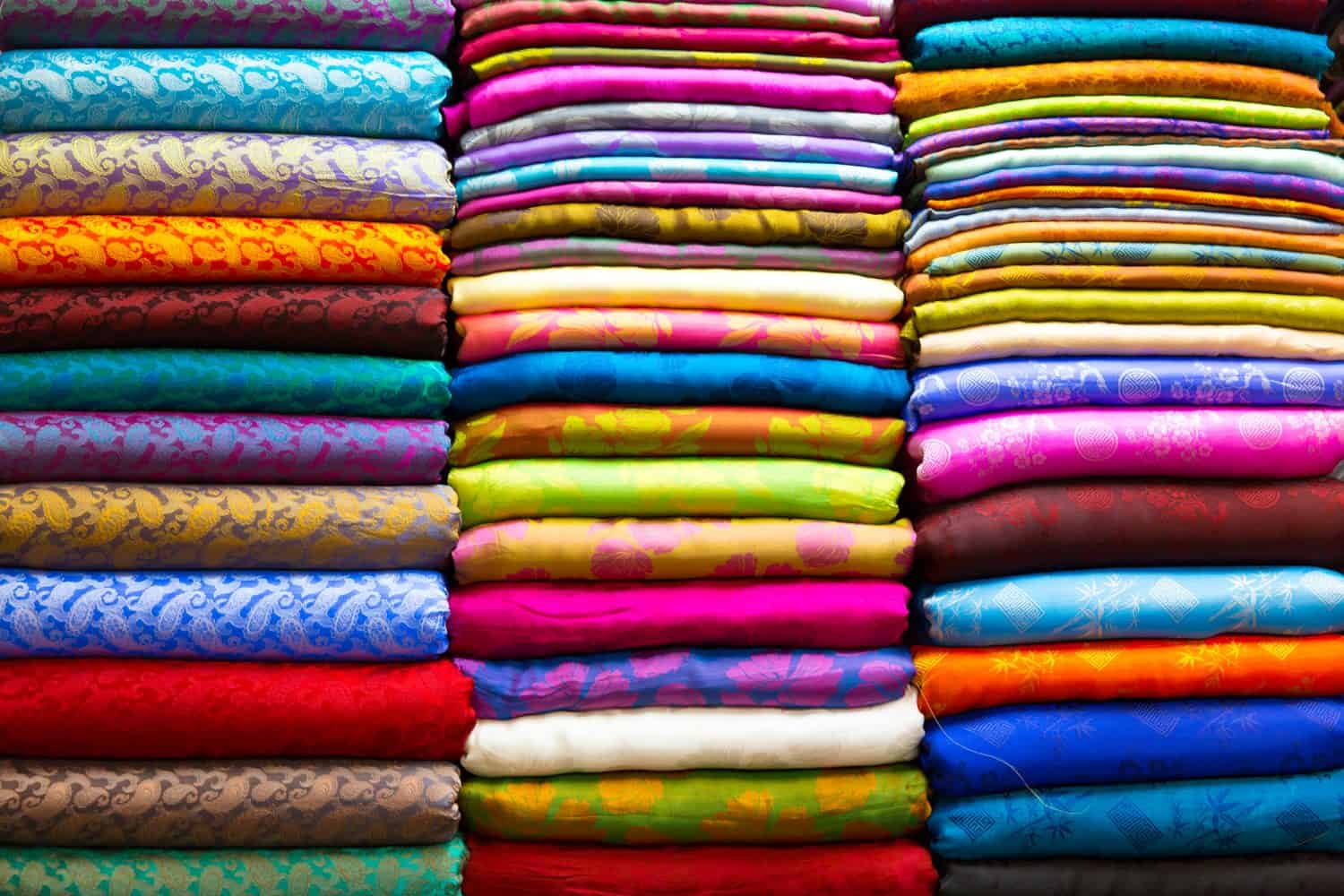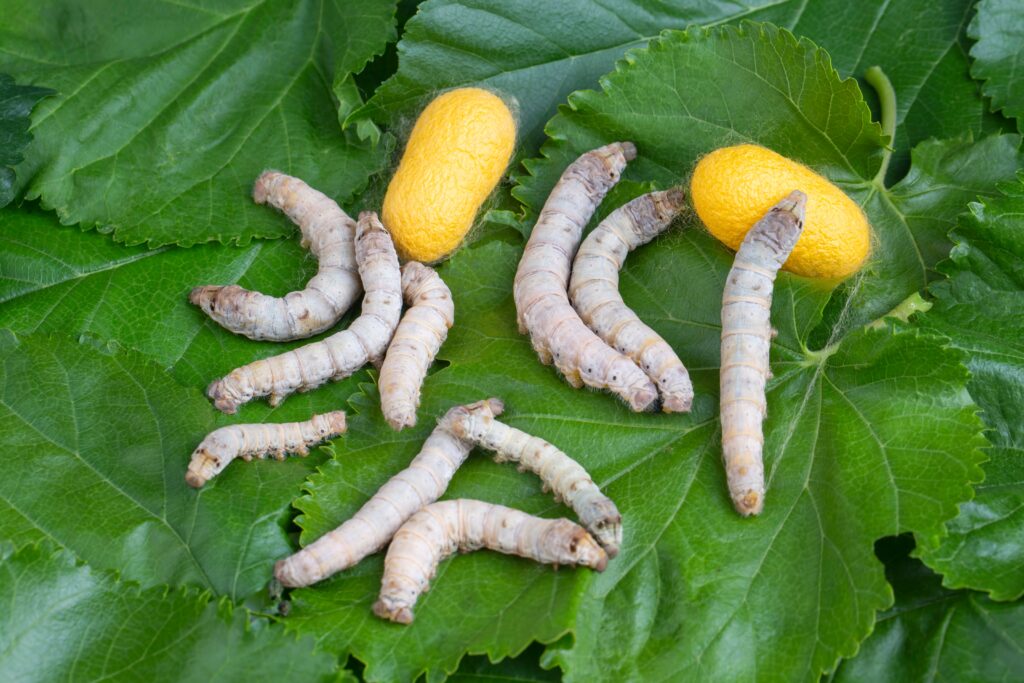Silk is the superstar of fabrics and textiles. This incredible material is created by silkworms, tiny insects that spin a single silken strand to form their cocoons. Known for its remarkable strength, silk has captivated humanity for centuries with its exquisite softness and mesmerizing sheen. Originating in China, silk became an exclusive luxury that gave birth to the legendary Silk Road, shaping civilizations across the Old World through its global trade. Even today, silk remains a highly sought-after commodity. Join us as we explore the top eight silk-producing countries in the world!
1. China

A silkworm creates its cocoon using a single silken thread they spin themselves!
©Alchemist from India/Shutterstock.com
Since the origin of silk, China has held fast as the number one silk-producing country in the world for thousands of years. Originating in a region south of the Yangtze River Delta, silk production in China goes as far back as 6,000 years to 3,630 BC! Around 400 BC China began exporting silk across the Silk Road, although the country zealously guarded their secret methods in silk production. Smuggling silkworm eggs, cocoons, or even mulberry seeds was illegal and punishable by death. Although other countries today now produce silk, China continues to contribute to over 70% of the world’s silk supply. According to the International Sericultural Commission (INSERCO), China produces around 55,000 tons of silk each year.
2. India

Unraveling a silkworm’s cocoon produces strings of raw silk.
©Julija Ogrodowski/Shutterstock.com
India, the second-highest silk-producing country, generates around 40,000 to 58,700 tons of silk each year. Over nine million individuals across 52,360 of India’s rural and semi-urban villages contribute to sericulture, also known as silk farming and silkworm cultivation. The wide variety of silk in India includes Muga, Eri, Mulberry, and Tasar. These fine materials find their way into garments, vibrant carpets, elegant shawls, and other exquisite products.
3. Uzbekistan

Silk in Uzbekistan is bold and colorful.
©Iryna Hromotska/Shutterstock.com
Although Uzbekistan’s numbers are well below that of China and India, it still stands among the world’s leaders in silk production. Uzbekistan produces around 4,070 tons of silk each year from silkworms. This stunning silk is not only beautiful but also unique due to the country’s traditional silk weaving techniques and Ikat fabric. In Uzbek culture, Ikat is called “abrband”, which means “to tie a cloud”. In this process, the silken threads are dyed and patterned before the fabric is woven together. The Uzbek Ikat or “abrandi” features bold and flamboyant colors that make it stand out from other types of silk.
4. Vietnam

Lotus silk is one of the most expensive fabrics in the world.
©Create Hot Look/Shutterstock.com
Vietnam, the fourth-highest silk-producing country in the world, yields around 1,170 tons of silk annually. The renowned Van Phuc Silk Village in Vietnam, also known as Ha Dong Silk Village, is celebrated as the “Cradle of Vietnamese Silk” with an ancient silk weaving heritage spanning more than 1,000 years. Van Phuc silk, known for its exquisite texture, lightweight nature, and graceful appearance, was historically reserved for only royalty and the elite aristocracy. Today, Vietnamese silk offers a wide array of options, including wrinkled silk, embroidered silk, and double-layered silk. Although most of Vietnam’s silk comes from silkworms, recently the country has taken on the production of exceptionally rare lotus silk.
5. Thailand

Silken threads are carefully woven together to create the beautiful silk fabrics we see today.
©Operation Shooting/Shutterstock.com
Thailand’s northeastern Isaan region is the primary source of raw silk in the country. Within this rural setting, families and villages engage in sericulture, the intricate process of raising silkworms, extracting silk fibers, and crafting their own silk threads and yarns. Thousands of artisans and families raise two distinct types of silkworms: the Eri silkworm (Samia ricini), which produces matte Eri silk, and the domesticated silkworm (Bombyx mori), which produces glossy mulberry silk. Renowned for their opulent texture and vibrant hues, Thai silks captivate people all over the world thanks to the country’s distinctive traditional silk dyeing techniques.
6. Brazil

Silkworms prefer eating white mulberry leaves.
©Esin Deniz/Shutterstock.com
Located in South America, Brazil is the leading silk-producing country in the region and ranks sixth globally with approximately 750 tons of silk produced annually. As silk made its way from China to other parts of the world over the centuries, the techniques and styles associated with its production underwent gradual transformations. Brazil, for example, produces exceptionally whiter and longer silk threads. Silk in Brazil mainly comes from Paraná, São Paulo, and Mato Grosso do Sul.
7. North Korea

To obtain silk, you must carefully unravel and unwind a silkworm’s cocoon.
©Santiparp Wattanaporn/Shutterstock.com
Silk in North Korea is commonly produced in factories, such as the Kim Jong Suk Silk Mill in Pyongyang. Here, around 1,600 workers sort and process silkworms and their cocoons. Following a boiling process, workers meticulously extract the silken threads from the cocoons. North Korea ranks number seven overall among the world’s top silk-producing countries, producing around 400 tons of silk each year.
8. Iran

Silk has a unique prism-like structure that produces a shimmering effect in certain lighting.
©Aleksandar Todorovic/Shutterstock.com
For over 3,000 years, Iran has been deeply intertwined with the art of silk production and the historic Silk Road. Even today, the country yields approximately 300 tons of silk annually. In countless villages, families and communities breed and raise silkworms, producing high-quality silk thread that is woven into Persian rugs and other luxurious fabrics. It is an arduous and painstaking process, but silk production here is a cherished heritage passed down through generations. Everyone has a role to play, from men and women to the children and elderly.
Summary of the Top 8 Silk-Producing Companies in the World
| Ranking | Country | Silk Produced 2020 | Silk Produced 2021 | Silk Produced 2022 |
|---|---|---|---|---|
| #1 | China | 58,750 Tons | 40,405 Tons | 55,115 Tons |
| #2 | India | 37,159 Tons | 38,404 Tons | 40,259 Tons |
| #3 | Uzbekistan | 2,245 Tons | 2,245 Tons | 2,245 Tons |
| #4 | Vietnam | 1,070 Tons | 1,175 Tons | 1,175 Tons |
| #5 | Thailand | 572 Tons | 554 Tons | 480 Tons |
| #6 | Brazil | 414 Tons | 410 Tons | 414 Tons |
| #7 | North Korea | 408 Tons | 408 Tons | 408 Tons |
| #8 | Iran | 297 Tons | 300 Tons | 302 Tons |
The photo featured at the top of this post is © Create Hot Look/Shutterstock.com
Thank you for reading! Have some feedback for us? Contact the AZ Animals editorial team.







